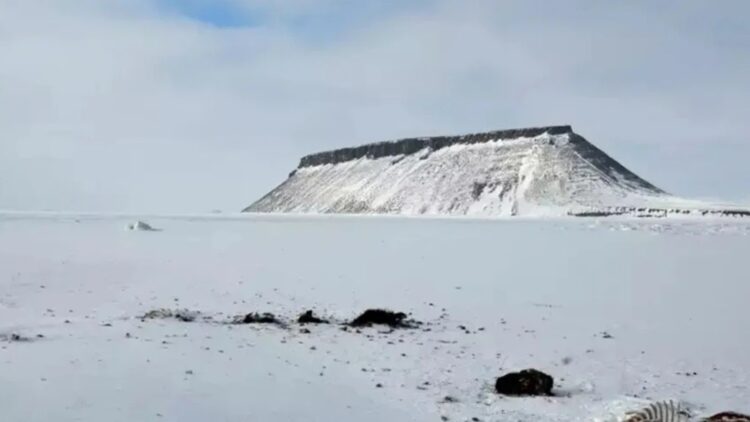By the middle of April 2024, NASA researchers conducting a geological survey of Greenland’s enormous ice sheet came across something other than a Cold War relic: Camp Century. A fairly ordinary radar flight soon became a fascinating historical, technological, and ecological adventure.
This frozen ‘city under the ice’ is the emblem of silent yet persistent struggle that hints not only at what the attempts of the imperialist era might have achieved, should it have received the resources it demanded, but also awakes questions about the future efficiently.
The secrets hidden under 30 meters of ice: Camp Century’s surprising history
Camp Century was built in 1959 by the U.S. Army Corps of Engineers as a military base, a network of tunnels dug through the near-surface ice. It was designed during the Cold War to provide personnel, research activities, and equipment to be stationed in such conditions.
However, in 1967, it was closed, and the structures and remaining parts were buried under snow and ice, accumulating year after year. But, by 2024, the site was covered with 30 meters of ice and appeared to have been left in the cold embrace of history.
NASA’s find revived interest in the base among people. When the UAVSAR (Uninhabited Aerial Vehicle Synthetic Aperture Radar) was mapping the Greenland ice sheets, it stumbled across Camp Century. While previous radar methods only provided two-dimensional images, UAVSAR provided a multi-dimensional view of the terrain, and the layout of the tunnels and structures was seen in great detail.
The UAVSAR system designed by NASA was quite revolutionary in radar systems. This cutting-edge tool enabled researchers to look through layers of ice and see details as if the actual ice was an ultrasound of a glacier. The radar generated clear pictures of the ice surface, sectioned layers, and sub-glacial bedrock using emitted and received radio waves.
Previous surveys indicated that Camp Century existed, but they did not provide much information about it. The new data demonstrated the camp’s existence and architecture, where some tunnels and facilities were concealed long ago.
“In the new data, individual structures in the secret city are observable in a manner that has never been done before,” said a cryospheric scientist at NASA’s Jet Propulsion Laboratory, Chad Greene. It was not a purposeful finding, however.
The team’s specific objectives were to independently confirm the ability of UAVSAR to map ice thickness, the primary driver of sea-level changes. However, the meeting with Camp Century was an interesting digression in their research work.
The hidden dangers of Camp Century: What rising temperatures mean for the future
Although the discovery of Camp Century provides a brief history of Cold War innovations, it also raises environmental issues. The base’s role was not only military but also to store biological, chemical, and radioactive agents. When the base was abandoned, such materials remained on the site, covered with ice.
As global temperatures continue to rise and the ice at the poles melts rapidly, researchers have said the camp could one day be compromised. Such an event can spread hazardous waste into the environment, threatening the local region’s ecosystems and the global climate.
These radar images are essential for determining when this exposure may occur so researchers can anticipate difficulties. Beyond the historical perspective, Camp Century re-establishes the ability of contemporary tools to establish the past and map the future.
The radar systems that pointed out the base are equally crucial for exploring ice sheets in Greenland, Antarctica, and other locations. Since climate change is progressing, knowing the ice thickness and its dynamics is essential for evaluating sea-level changes.
Scientists cannot precisely determine how soon certain regions might be impacted without measuring the shifting landscape. ASCAT and other UAVSAR-type systems provide tools to address these deficiencies and improve climate modelling.
Lessons from Camp Century: What we can learn from a frozen city under the ice
Camp Century’s rediscovery is a reminder of humanity’s ability to create, abandon, and rediscover. Its buried tunnels tell a story of Cold War ambition and innovation, while the ice that entombs it speaks of nature’s relentless power.
At the same time, its potential environmental risks underscore the need for vigilance in addressing the legacies we leave behind. As scientists continue to study this “city under the ice,” its lessons will resonate far beyond the frozen landscapes of Greenland, inspiring curiosity, caution, and action in equal measure.

